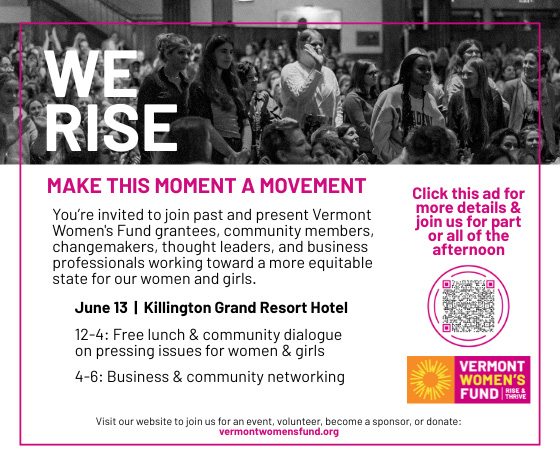By Kevin O’Connor / VT Digger
Creating an affordable statewide high-speed broadband and cellular access plan would appear to be a feat of a lifetime.
So, what if one also wanted to reduce poverty, racism and climate change, improve Vermont’s economy, environment and education system, and strengthen its public trust, civility and democratic decision-making?
“We are no longer at a point where we can tackle our pressing issues in isolation,” said Charlie Hancock, chair of a new Vermont Proposition action team that’s aiming to collectively address the state’s biggest challenges.
The volunteer group of 24 diverse leaders has come together with the help of the nonpartisan nonprofit Vermont Council on Rural Development, which has led three decades of policy efforts on agricultural development, energy generation, the creative and digital economies, and democratic engagement.
“The Vermont Proposition is a starting point to promote action over the next three years that will be essential for a strong and prosperous future over the next 30,” said Paul Costello, the council’s outgoing executive director.
The council was contemplating a major study about the state’s future upon the arrival of Covid-19, only to see the need expand in the year and a half since.
“We are together at a historic threshold where there are major opportunities to think bigger,” Costello said. “Working collectively, we have this tremendous power for change.”
Organizers, tapping hundreds of personal interviews and more than 1,000 written contributions, have crafted a 27-page report that calls for the state to:
- Ensure affordable high-speed broadband and cellular access for all to promote community connection and commerce.
- Combat racism and celebrate diversity.
- Advance creative solutions to climate change.
- Reduce poverty and promote opportunities for prosperity for all.
- Give all children access to affordable, high-quality care and education.
- Ensure students of all backgrounds and abilities thrive in public schools for future civic and vocational success.
- Strengthen local business and entrepreneurship through investment and innovation.
- Boost state planning and regional coordination to promote efficiency and foresight.
- Conserve land and water while cultivating a working landscape.
- Renew civic engagement and strengthen trust, civility and democratic decision-making.
To spur this, the council has gathered a Future of Vermont action team featuring two dozen leaders from business, government, education, farming and forestry, health care and the nonprofit sector.
“Action team members bring expertise in one or more areas, but all have committed to pushing for progress on the Proposition as a whole,” said Hancock, a consulting forester and chair of the Montgomery Select Board.
It’s not the first time Vermonters have attempted such an effort.
The Vermont Commission on Country Life, formed after the disastrous flood of 1927, funneled similar discussions into a report that called for creation of the state police and enlargement of the state Board of Education.
In 1968, the state’s first modern Democratic governor, Philip Hoff, chaired the Vermont Planning Council, whose “Vision and Choice — Vermont’s Future” study helped spur the pioneering Act 250 land-use law.
In 1988, the state’s first female governor, Madeleine Kunin, created the Governor’s Commission on Vermont’s Future that sparked the Act 200 growth management law.
The Council on Rural Development first took its own turn from 2007 to 2009, when it surveyed almost 4,000 experts and everyday folk for its report “Imagining Vermont: Values and Vision for the Future.” That inspired a working lands enterprise initiative that has granted more than $7 million to farm and forestry projects.
The new action team plans to develop a schedule and strategies to propel its plan by strengthening existing efforts and seeding new ones. It is also gathering a coalition of supportive individuals and organizations as part of a Partnership for the Future of Vermont.
“This is an opportunity to bring Vermonters together at a time when we are surrounded by the undercurrents of divisiveness,” Costello said.
“We need to stand up together,” incoming executive director Brian Lowe added, “and address these problems collaboratively.”



